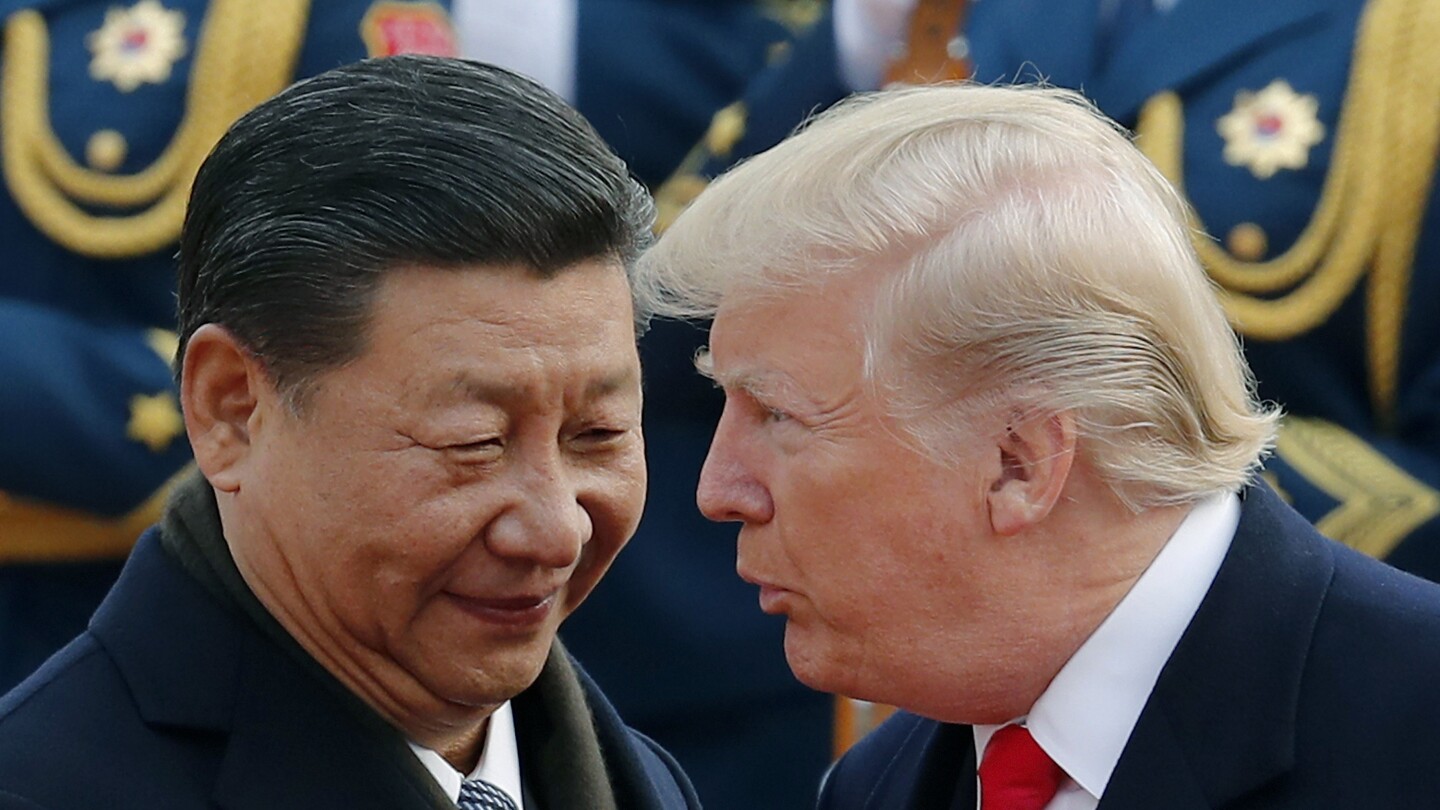Unraveling the US-China Tariff Tug-of-War: A Comprehensive Timeline
The intricate timeline of tariffs imposed by the US and China since the onset of Trump’s first term reveals a complex narrative marked by economic strategies, international diplomacy, and evolving geopolitical dynamics. This tug-of-war has not only impacted bilateral relations but has also sent ripples throughout the global economy. In this article, we will explore the key milestones, decisions, and implications of the tariff battles that have defined US-China trade relations over the past few years.
The Prelude to Tariffs: Economic Context
Before delving into the tariff timeline, it’s essential to understand the economic context that set the stage for these trade tensions. The US has long expressed concerns about its trade deficit with China, intellectual property theft, and unfair trade practices. These issues were brought to the forefront during Donald Trump’s campaign for the presidency, where he promised to take a tough stance on China to protect American jobs and industries.
The Beginning of the Tug-of-War: 2018
The US-China tariff saga began in earnest in 2018. In March, President Trump announced tariffs on steel and aluminum imports, citing national security concerns. This move set the tone for a series of retaliatory actions from China.
- March 22, 2018: The US imposes a 25% tariff on steel and a 10% tariff on aluminum.
- April 2, 2018: China retaliates with tariffs on $3 billion worth of US goods, including pork and fruit.
- July 6, 2018: The US imposes a 25% tariff on $34 billion worth of Chinese goods, leading to China’s immediate retaliation with equivalent tariffs.
These initial tariffs marked the beginning of a full-blown trade war, with both countries quickly escalating their measures. By the end of 2018, tariffs were imposed on hundreds of billions of dollars’ worth of goods on both sides, creating uncertainty in the markets and affecting global supply chains.
2019: Escalation and Negotiations
The year 2019 witnessed further escalation of the trade war, characterized by a series of rounds of tariffs and ongoing negotiations that often appeared to be on the brink of resolution but ultimately faltered.
- May 2019: The US increases tariffs on $200 billion worth of Chinese goods from 10% to 25%, citing lack of progress in negotiations.
- June 2019: During the G20 summit in Osaka, Trump and Chinese President Xi Jinping agree to restart trade talks.
- September 2019: The US announces a new round of tariffs at 15% on $300 billion worth of Chinese imports, including consumer goods.
Despite ongoing negotiations, the trade war continued to escalate, leading to market volatility and heightened tensions. The uncertainty created by the tariffs affected not just US and Chinese economies but also impacted global markets, as businesses began to reassess their supply chains and strategies.
The Phase One Agreement: A Glimmer of Hope
As 2019 drew to a close, there was a sense of urgency to reach an agreement. In January 2020, the US and China finally signed the Phase One trade agreement, which aimed to de-escalate tensions and lay the groundwork for future negotiations.
- Key components of the Phase One agreement included:
- China’s commitment to purchase an additional $200 billion worth of US goods over two years.
- Provisions to strengthen intellectual property protections.
- Commitments to enhance transparency and enforceability of trade practices.
While the Phase One agreement was a positive step, many experts pointed out that it did not address the more fundamental issues at the heart of the trade conflict. Tariffs remained in place, and the overall relationship between the two nations remained fraught with tension.
2020: The Impact of COVID-19
The onset of the COVID-19 pandemic in early 2020 added a new layer of complexity to the US-China trade relationship. As economies around the world ground to a halt, the implications of the trade war were exacerbated by the global health crisis.
- April 2020: The US government begins to scrutinize China’s role in the outbreak of COVID-19, leading to renewed tensions.
- August 2020: The US continues to impose tariffs, while China struggles to meet its purchase commitments outlined in the Phase One agreement.
The pandemic highlighted vulnerabilities in global supply chains and forced companies to rethink their dependence on China. As the US economy sought recovery, there was a growing sentiment among American businesses and policymakers to diversify supply sources away from China.
2021 and Beyond: A Shift in Strategy
As President Biden took office in January 2021, the approach to tariffs and trade relations began to shift. While the Biden administration acknowledged the challenges posed by China, it also recognized the need for a more nuanced approach.
- March 2021: The Biden administration conducts a review of the tariffs imposed by the Trump administration.
- October 2021: Reports indicate that the Biden administration is considering tariff relief to alleviate inflationary pressures.
This shift suggests a potential re-evaluation of the tariff strategy, with a focus on balancing economic recovery and addressing long-standing concerns regarding China’s trade practices. Although no significant changes had been made by the end of 2021, the dialogue between the two nations continued, with hopes for a more cooperative relationship.
Looking Ahead: The Future of US-China Trade Relations
As we move forward, the US-China tariff tug-of-war remains a significant factor in international trade dynamics. Both nations face the challenge of navigating complex economic concerns while addressing broader geopolitical issues.
Looking ahead, several key factors will shape the future of US-China trade relations:
- Domestic Economic Recovery: Both countries will need to address their economic recoveries post-COVID-19, which may influence tariff policies and trade negotiations.
- Technological Competition: The race for technological supremacy, particularly in areas like semiconductors and artificial intelligence, will impact trade dynamics.
- Global Supply Chains: Businesses will continue to reassess their supply chains, seeking diversification and resilience in the face of future disruptions.
In summary, the timeline of tariffs imposed by the US and China since the onset of Trump’s first term reflects a complex interplay of economic motives, diplomatic tensions, and evolving strategies. As both nations navigate their paths forward, the hope remains that constructive dialogue and cooperation will prevail, ultimately benefiting not just the US and China, but the broader global economy.
See more CCTV News Daily



